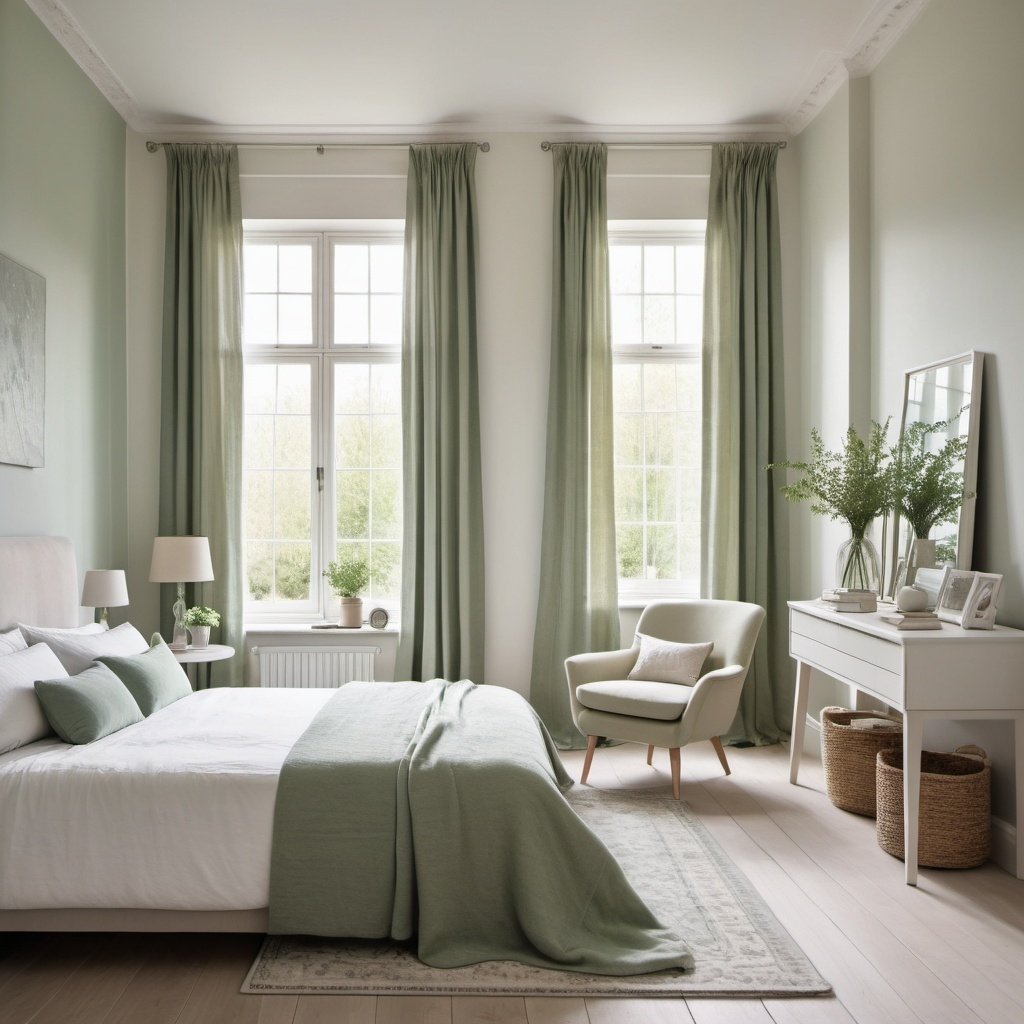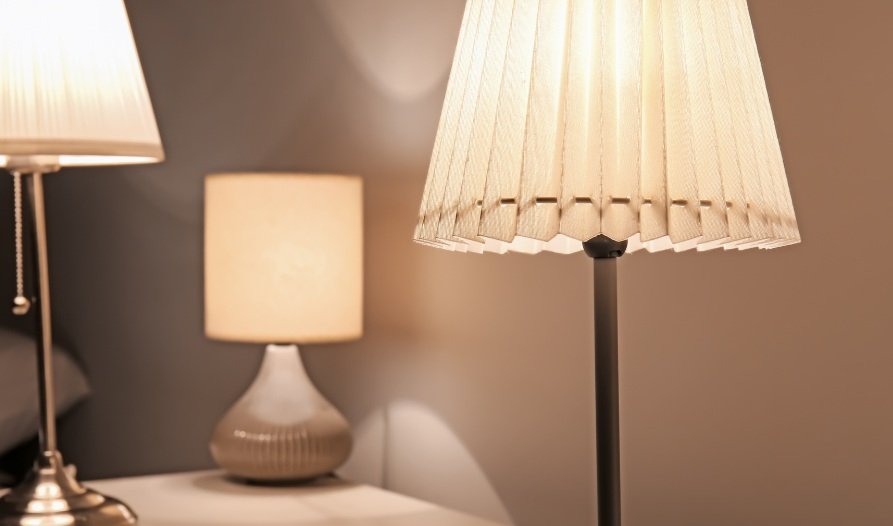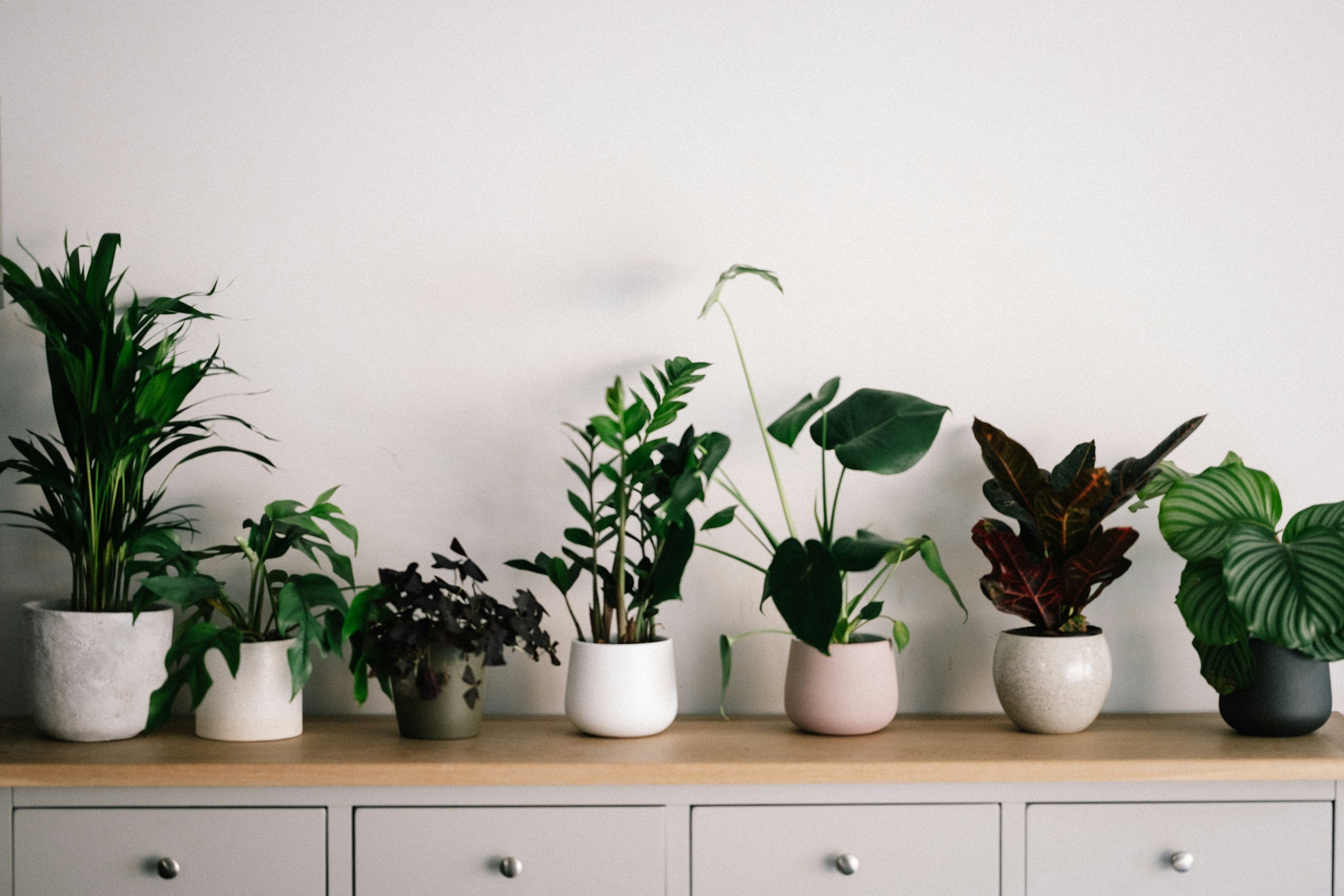Creating your Sleep Sanctuary: How to Design a Bedroom that promotes Sleep
Illustration
Did you know, prioritising a good night’s sleep is one of the best things you can do to improve your health and wellbeing?
I’m passionate about the enormous impact our surroundings have upon our bodies and minds, and I design with this in mind, to create spaces that work with our bodies to promote health and wellbeing. So, how can you design your bedroom to help you to get a good night’s sleep?
Structural Considerations:
Let’s start with the bones of the building. The ideal temperature to drift off to sleep is 16-18C. So, if your bedroom doesn’t have an adjustable heating system, or windows that can be opened, to allow you to control the temperature of the room, this is something to consider. Not only will it help you to drift off to dreamland, improving your heating system may also help with your energy efficiency and costs, and opening windows helps to improve the air quality in the room – another influencing factor when it comes to getting a good nights sleep.
Ok, that’s the structural talk out of the way! Let’s think about the interiors!
Colour:
Colour plays a significant role in influencing our emotions. We need to be able to relax our bodies and minds in order to fall asleep, so we need a colour scheme to suit.
In general, softer, more muted tones are most associated with calmness and relaxation. However, we are all different and so are our colour perceptions and associations, so it’s important to choose a colour that you love, in a shade that makes you feel most relaxed.
Blues, greens and white are known to promote relaxation, but it’s important to consider brightness and intensity of colour. A soft, muted green may promote relaxation, but a vibrant lime is not going to have the same effect!
Intense colours like reds and oranges are very stimulating, so are best avoided or kept to a minimum in bedrooms.
If you are more of a morning person you will benefit from a fresher, neutral colour scheme that allows you to embrace morning light and complements your morning energy.
Night owls are more suited to a darker colour scheme, which creates a comforting cocooning effect, and helps to maintain darkness during early mornings when they prefer to be sleeping.
Light:
Scientists have found that an hour of exposure to natural sunlight during the morning helps us to fall asleep at night. At bedtime, we need to dim the lights in preparation for sleep and block out daylight from outdoors.
Therefore, good quality window treatments in the bedroom are essential for light control and aiding healthy sleep patterns. Shutters, black out blinds, or lined curtains can help you to optimise light control from your windows. Letting the daylight in when you get up in the morning and keeping it dark at night. They also help to keep a room warm or cool, optimising that sleep temperature range mentioned above.
If space permits, incorporating a seating area near your bedroom window helps to encourage natural light exposure whilst indoors.
Inside our bodies our sleep-wake cycle is influenced by a number of hormones. Insomnia has been linked to low Oestrogen and low Progesterone, which is why some women experience sleep problems during menopause. If you have trouble sleeping, a good tip is to keep the clock face out of view. We need to be relaxed to fall asleep, and clock-watching during the night induces anxiety!
Melatonin helps to control our 24-hour body clock, or circadian rhythm, we naturally produce it when exposed to darkness, so exposing ourselves to light at night time disrupts its production.
Blue light – associated with screens such as televisions, phones and computers, is particularly harmful to Melatonin production. Therefore, it’s a good idea to keep screens out of the bedroom and avoid using them in the lead up to bedtime. If night-time screen use cannot be avoided, put them in “night mode” which reduces the amount of blue light emitted from the screen.
For bedroom lights its best to choose dimmable, amber bulbs and incorporate dimmer switches, and lamps with different brightness settings. Dim the lights from evening onwards to signal to your body that it is time for sleep, and replicate this in other parts of your home, if you usually spend time there before going to bed.
Soft, warm, dimmable lighting is ideal for preparing ourselves for sleep.
Comfort:
It goes without saying that a comfortable mattress, supportive pillow, and cosy bedding are essential for good quality sleep.
Regularly clean your mattress and pillows and replace mattresses every five years. Your pillow should spring back when pressed - once it starts to sag, it’s time to say goodbye! Check if your local recycling centre accepts old mattresses and soft furnishings, or whether the company you purchase your new bedding from offers a recycling scheme, to help reduce waste and impact on the environment.
On the bed, invest in good quality bedlinens made from natural fibres such as bamboo, silk or high-thread-count cotton, avoiding synthetic fibres such as polyester. This helps us to avoid overheating in bed and promotes comfort.
Relaxation at bedtime helps us to fall asleep so activities such as reading, yoga, and meditation are all helpful. If space allows, include furnishings in your bedroom to promote these activities before sleep, such as a comfortable chair and lamp for reading, or a rug where you can exercise.
Soft furnishings such as rugs, throws and thick curtains help to provide noise reduction and promote comfortable acoustics in a room. If noise is a problem when you are trying to sleep, try listening to white noise, or relaxing music. Ear plugs can also be helpful.
Think “tidy house, tidy mind”, when it comes to your bedroom. A messy or cluttered environment creates visual stress, which impedes relaxation and therefore affects our ability to fall asleep. It’s a good idea to tackle clutter in the bedroom and maintain a clean and tidy sleep environment.
If you find it hard to relax at bedtime, try placing a tactile journal and pen next to the bed for a bedtime “brain-dump”. Getting our thoughts and worries out of our heads and onto paper helps to release them from our minds and aids relaxation.
Sleep Tip: Keeping your hands and feet warm at bedtime helps to lower your core temperature and promote sleep onset.
Air:
Bedroom air quality has a huge impact on falling and staying asleep. Opening windows daily, to air out the room, will help to improve air quality and keep your bedroom feeling fresh.
Plants in the bedroom remove toxins from the air, and provide a connection to nature, which can induce those feelings of calmness and peace that are essential for sleep onset. Peace Lily, Aloe Vera, Rubber plant, Spider plant, English Ivy and Gold Pathos are all good choices to add foliage to the bedroom.
Scents such as Lavender, Chamomile, Geranium and Bergamot are also known to aid sleep, so a diffuser or scented candle can also help to transform your bedroom into a sanctuary for snoozing!
Plants in the bedroom improve air quality and provide a calming connection to nature.
The Bottom Line:
Transforming your bedroom into a sleep sanctuary involves thoughtful design choices that prioritise comfort, tranquillity, and relaxation. By implementing these interior design tips, you can create an environment that promotes deep, restorative sleep. Let’s bid farewell to sleepless nights and embrace the rejuvenating power of a well-designed bedroom. Your mind and body will thank you for it!
Kim Heslip is an interior designer and the founder and owner of Nest and Flourish Interiors. Kim is an advocate for diversity and inclusion and is passionate about the enormous impact our surroundings have on our health and wellbeing.
Kim has a wealth of knowledge around accessible and inclusive design and believes beautiful interiors are for everyone. She helps people, throughout the Yorkshire region, who have health and accessibility requirements, to redesign interior spaces, accommodating their needs, without compromising on style.
Contact Kim to find out how she can help you to make life-enhancing improvements to your interior spaces that embrace your individuality and support all of your needs.
Nest and Flourish Interiors was mentioned in a Rent. article. Check out the featured article: The Ultimate Sleep Hygiene Checklist | Rent. Blog | Rent.





